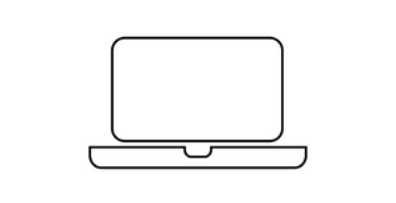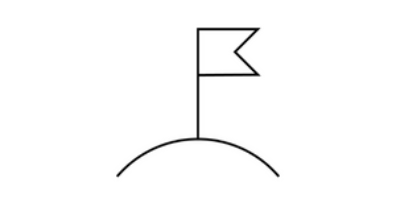
How We Hire
There are three main phases of the recruiting process. As you move through each of the phases, here are some helpful tips and information to help you understand each step of the way.

It starts with finding the right job for you. We are excited that you want to pursue a career with us.
When you find a role that matches your interest, click the “apply now” button and follow the instructions to get started.
To help you prepare an application, see our tips for applying.
When you find a role that matches your interest, click the “apply now” button and follow the instructions to get started.
To help you prepare an application, see our tips for applying.

Your application will be reviewed by a recruiter as quickly as possible. If you’re selected for an interview, you'll meet with the rest of the hiring team. We'll want to learn more about you and what interests you about us.
We value the whole person; so in addition to your skills and experiences, we'll consider your overall potential as a great employee.
To help you prepare for an interview, see our interview tips and practice questions.
We value the whole person; so in addition to your skills and experiences, we'll consider your overall potential as a great employee.
To help you prepare for an interview, see our interview tips and practice questions.

Offer
After the interview process, our hiring team will meet again before contacting you. If you are selected, we'll make an offer to start your new career with us.
Interested in what we offer our employees? Read more about our benefits.
Interested in what we offer our employees? Read more about our benefits.
Tips for applying
- Make sure your resume highlights the skills and experiences that are applicable to the role.
- Provide examples that help support your experience. For example, if you're applying to a sales role, highlight times when you exceeded budgets; for a technician role, highlight the different equipment you've worked on; for a college student, explain how a class project or internship would relate to the job.
- Make sure you pick a font that is universal so any computer can read it easily (such as Arial).
- Ensure the right format; use a commonly accepted format such as .doc or .pdf.
- Add your contact information at the top including your name, phone number and an email address that you check frequently. Including the location is important, but for safety reasons, we recommend not adding your home address, especially if you are going to use this on a publicly accessed job board website.
At this time, we only support online applications. If a disability prevents you from applying for a job through our Careers site, email for special assistance. No other requests will be acknowledged.
Tips for interviewing
- Phone Interview: These conversations typically cover your background and experiences, challenges you’ve faced and how you’ve handled them.
- Video interview: These interviews may be self-recorded or live using video conferencing. Similar to phone interviews, we’ll be covering your background and experiences. To prepare for a virtual interview, complete a sound and video check, make sure you are in a well-lit environment, and connect at least five minutes before it starts.
- In-person: These interviews will be conducted on-site at one of our locations. You’ll meet with the local team which may include the hiring manager, a leader, or a future peer. Be sure to arrive early and dress for the job you want. Be sure you have a hard copy of your resume and any presentation materials as directed by your recruiter.
We use a behavioral-based interviewing style for assessing candidates. You will be asked questions that focus on situations you have encountered in the past and how you’ve responded to them. We feel this style is most effective to help us identify key competencies of candidates. We’ve provided some practice questions and answers for you below to give you an idea of the types of questions we might ask.
A good way to provide an example of your experience is to use the STAR structure:
- Situation
- Task
- Action
- Results
Be familiar with our Leadership Principles and ESG Report so you can be articulate why you think you’d be a great fit for the team. Some resources to review include our Culture and Leadership Principles, and our ESG Report.
Trane Technologies does not consent to any form of interview recording by job seekers in order to protect the confidentiality of the information discussed. Examples of inappropriate recording include but are not limited to: cassette tape, video recording, or AI software.
If you require accommodations due to a disability when applying for a job, please email us to request assistance: SpecialAssistance_EnterpriseTalentAcquisition@tranetechnologies.com
If you require accommodations due to a disability when applying for a job, please email us to request assistance: SpecialAssistance_EnterpriseTalentAcquisition@tranetechnologies.com
We will make accommodations on a case-by-case basis. If you are a person with a disability and need assistance, please submit a request.
Interview Prep & Practice
A general question:
Describe a time when you became frustrated with a peer or team member.
Situation/Task: A past co-worker would leave details out of their job notes which are shared internally and vital to ensuring our customers received consistent service. In order to create good customer service, these notes needed to be completed thoroughly for information sharing across the team.
Action: I quietly addressed the issue with my co-worker to see if there was something else going on. As it turns out, they weren’t confident in their ability to articulate the notes in the system. Too embarrassed to ask for help, they only added minimal information.
Result: I offered to have my teammate shadow my calls with the customer so they could see first hand the information that was critical to our success. After some 1-on-1 training, we were able to boost their confidence and help them understand the notes needed for the greater team and customer satisfaction.
Action: I quietly addressed the issue with my co-worker to see if there was something else going on. As it turns out, they weren’t confident in their ability to articulate the notes in the system. Too embarrassed to ask for help, they only added minimal information.
Result: I offered to have my teammate shadow my calls with the customer so they could see first hand the information that was critical to our success. After some 1-on-1 training, we were able to boost their confidence and help them understand the notes needed for the greater team and customer satisfaction.
A customer service question:
Can you tell me about a time when you effectively handled a customer complaint?
Situation/Task: There was one time when a customer was upset because the ATM at our branch was down. The customer needed to check her account balance and the ATM was under repair.
Action: I saw that the customer was upset, so I asked her if I could help. After finding out that she was interested in checking her account balance, I walked her over to our phone kiosk and let her know that she could obtain her balance by calling our 1-800 number.
Result: The customer thanked me and two weeks later my manager received a letter of appreciation from her.
Action: I saw that the customer was upset, so I asked her if I could help. After finding out that she was interested in checking her account balance, I walked her over to our phone kiosk and let her know that she could obtain her balance by calling our 1-800 number.
Result: The customer thanked me and two weeks later my manager received a letter of appreciation from her.
A management question:
When was the last time you gave feedback to an employee who was not performing up to standards? What did you do?
Answer example:
Situation/Task: A new employee was underperforming and struggling in her new role. I needed to determine where the issues were and why the underperformance was happening.
Action: I worked with the employee and discussed what her strengths were. We determined that her background was better suited for a different role.
Result: I shifted her into that role that better suits her skill sets and interest. She's now thriving!
Action: I worked with the employee and discussed what her strengths were. We determined that her background was better suited for a different role.
Result: I shifted her into that role that better suits her skill sets and interest. She's now thriving!
